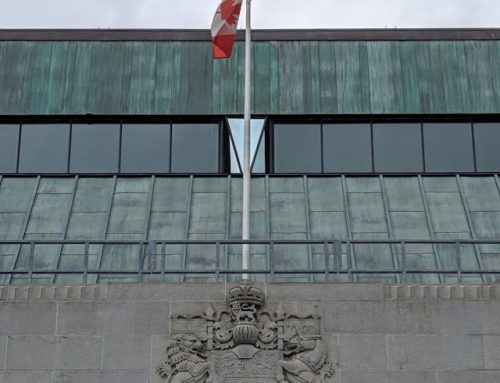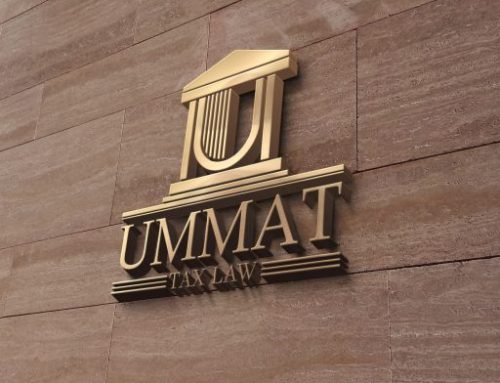Federal Court of Appeal Includes Taxes Payable in Computation of Safe Income
Access Decision Here
626468 New Brunswick Inc. v. Her Majesty the Queen 2019 FCA 306
Summary
The Federal Court of Appeal (“FCA”) dismissed 626468 New Brunswick Inc.’s (“626”) appeal on the basis that section 55(2) of the Income Tax Act (ITA) applied to a deemed dividend.
Background
The Law
This decision involves the safe income rules in the ITA. Subsection 55(2) of the ITA is an anti-avoidance provision which will in certain circumstances convert a tax-free intercorporate dividend into a capital gain.[1] The provision is lengthy, and Webb J. unpacks the provision into its requisite components as follows:
- a Canadian resident corporation has received a dividend;
- that corporation is entitled to a deduction under subsections 112(1) or (2) or 138(6) of the Act in relation to that dividend;
- the dividend is received as part of a transaction or event or a series of transactions or events;
- one of the purposes or one of the results of that dividend was to significantly reduce a portion of the capital gain that would be realized if any share were to be sold for fair market value:
for any deemed dividend referred to in subsection 84(3) of the Act arising as a result of a redemption, purchase or cancellation by a corporation of its shares, it is the result of that dividend that is relevant; and
for any other dividend, it is the purpose of that dividend that is relevant;
- the relevant time for the hypothetical sale of shares is immediately before the dividend is paid and the fair market value of the particular share is to be determined as of this time;
- it is reasonable to consider that the portion of the capital gain that has been reduced is attributable to anything other than income that has been earned or realized after 1971 and before the safe income determination time by any corporation; and
- there is an exception (which is not applicable in this case) related to a portion of the dividend that is subject to Part IV tax that is not refunded as described in this subsection.
Paragraph (6) above is a direct reference to ‘safe income’ or after tax retained earnings. The issue in this appeal was whether the anti-avoidance provision at subsection 55(2) applied to a deemed dividend, such that the capital gains on the disposition of shares would be resultingly increased.[2]
The Facts
In 2006, Rodney Gillis (“Gillis”) owned an apartment building in New Brunswick. Interested in selling this property, he sought advice from an accountant in Toronto with respect to how the transaction should be structured. To that end, the accountant prepared a memo outlining the various steps to be completed in relation to the sale of the real property.
The first step was the transfer of the land and building from Gillis to Tri-Holdings Limited (a corporation formed by Gillis under the laws of New Brunswick) on a tax-deferred basis under section 85 of the ITA. Tri-Holdings issued four common shares to Gillis. Gillis then transferred his four common shares of Tri-Holdings to 626 under section 85 as well. 626 issued four common shares to Gillis as consideration for his transfer of the common shares of Tri-Holdings. Tri-Holdings sold the land and building to an arm’s length purchaser for $5,829,000. As a result of selling the land and building for this amount, Tri-Holdings realized a capital gain in the amount of $2,639,000 and recaptured capital cost allowance in the amount of $1,759,684.
Tri-Holdings then increased its PUC by $1,879,120 from December 13-17, 2006. Each PUC increase resulted in a deemed dividend payable by Tri-Holdings to 626. This also resulted in a corresponding increase in the ACB of the Tri-Holdings shares held by 626. During this period, Tri-Holdings also increased its PUC by $1,319,500, which was the balance in its capital dividend account. Tri-Holdings filed the election to treat this deemed dividend as a capital dividend under subsection 83(2) of the ITA. The capital dividend reflects the non-taxable half of the capital gain realized on the disposition of the assets by Tri-Holdings. The capital dividend also resulted in an increase in the ACB of the shares of Tri-Holdings held by 626.
In the Memo, it was contemplated that the shares of Tri-Holdings held by 626 would be sold to an arm’s length purchaser. In order to increase the ACB of the shares of Tri-Holdings to the amount that the third party purchaser would be paying to 626, Tri-Holdings increased its PUC by the additional amount of $569,093 on December 18, 2006. The only issue before the Tax Court and the FCA was in relation to the final deemed dividend arising as a result of the increase in the PUC of the shares of Tri-Holdings on December 18, 2006 in the amount of $569,093.
Tax Court Hearing
The Tax Court hearing involved the computation of safe income, and the issue was whether the taxes payable by Tri-Holdings on the sale of the real property reduced the safe income. The Tax Court answered the question in the affirmative. The income of Tri-Holdings from the sale of real property was $3,079,184. This disposition of assets occurred prior to December 13, 2006. The taxes arising as a result of this disposition of assets were not paid prior to the increases in paid-up capital that were completed during the period from December 13 to December 18, 2006. The ultimate issue was whether it was reasonable to consider that the amount of income that would contribute to a capital gain arising on a sale of shares of Tri-Holdings would be reduced by these taxes.
Decision & Analysis
In order to determine if the sale of the property reduced the safe income, the Court was required to determine:
(a) the fair market value of the shares of Tri-Holdings immediately before this final deemed dividend is paid will be determined (Court found it was $3,707,165);
(b) the adjusted cost base of the shares of Tri-Holdings held by 626 NB immediately before this final deemed dividend is paid will be determined (Court found it to be $3,198,620);
(c) the capital gain that would be realized on a disposition of the shares of Tri-Holdings held by 626 NB immediately before this final deemed dividend is paid will be determined (found to be $508,545);
(d) the safe income of Tri-Holdings as of the safe-income determination time will be determined, and in particular, whether the safe income is reduced by the taxes payable by Tri-Holdings as the result of the disposition of its assets; and
(e) the safe income on hand as of the time immediately before the final deemed dividend is paid will be determined.
Paragraphs (d) and (e) above were the battleground, because taxes had not been paid on the income of Tri-Holdings before the increases to the PUC of the shares at issue. In other words, should the computation of safe income include taxes payable but not yet paid? The Court found that it should. The Court found that Tri-Holdings could not take advantage of the timing of the transaction to avoid including taxes payable into the computation of safe income, mainly because the tax liability had been calculated at that point. Therefore, the safe income would be equal to the income earned on the sale minus the tax payable on that sale. The appeal was thus dismissed with costs payable by 626.
Takeaway
The Court describes how, as a technical matter, the dividend paid on December 18 is converted to a capital gain:
Paragraph 55(2)(a) of the Act provides that the amount in issue is deemed to not be a dividend. As a result, there is no addition to the adjusted cost base of the shares for this amount under paragraph 53(1)(b) of the Act. The subsequent sale of the shares for $3,707,165 results in an increased capital gain (because the adjusted cost base of the shares is lower). Since this amount in question is otherwise reflected in the amount paid by the third party, no additional amount would be added to the proceeds under paragraph 55(2)(b) of the Act.[3]
Call Ummat Tax Law for expert tax advice.
[1] The 2015 Federal Budget introduced new ‘purpose’ tests as part of a more stringent subsection 55(2).
[2] Dividends can be paid without attracting the application of subsection 55(2) of the ITA if such dividends only reduce the portion of the capital gain that is attributable to safe income.
[3] 626468 New Brunswick Inc. v. Her Majesty the Queen 2019 FCA 306, at para. 74.




